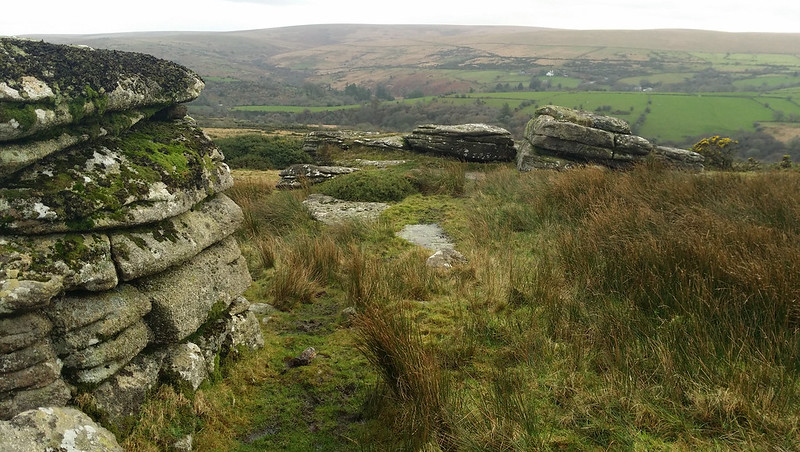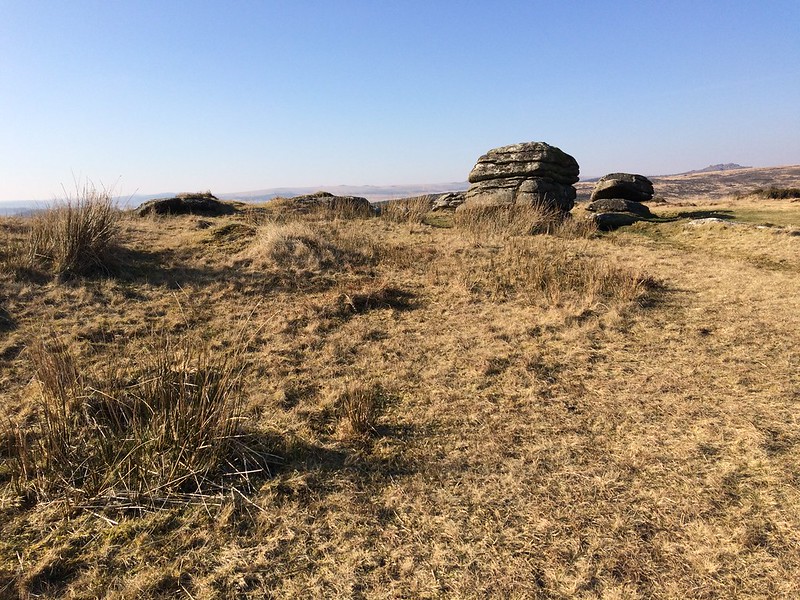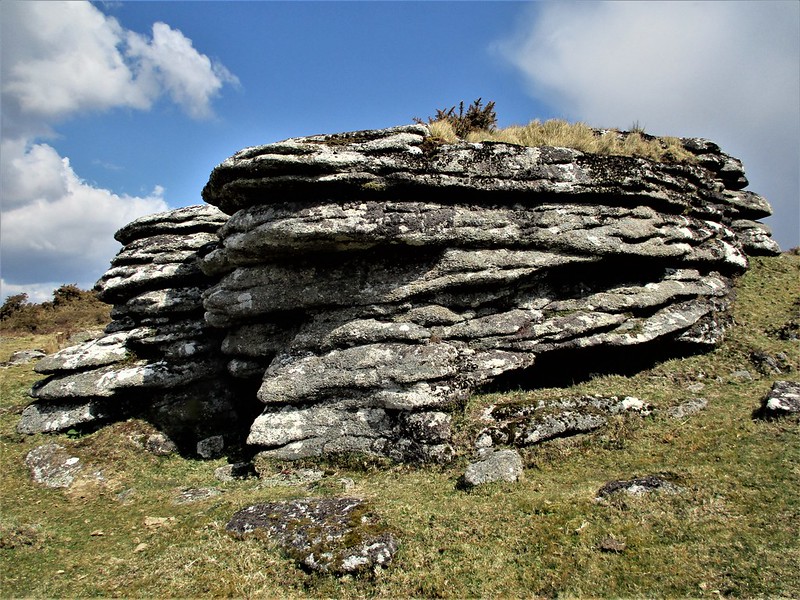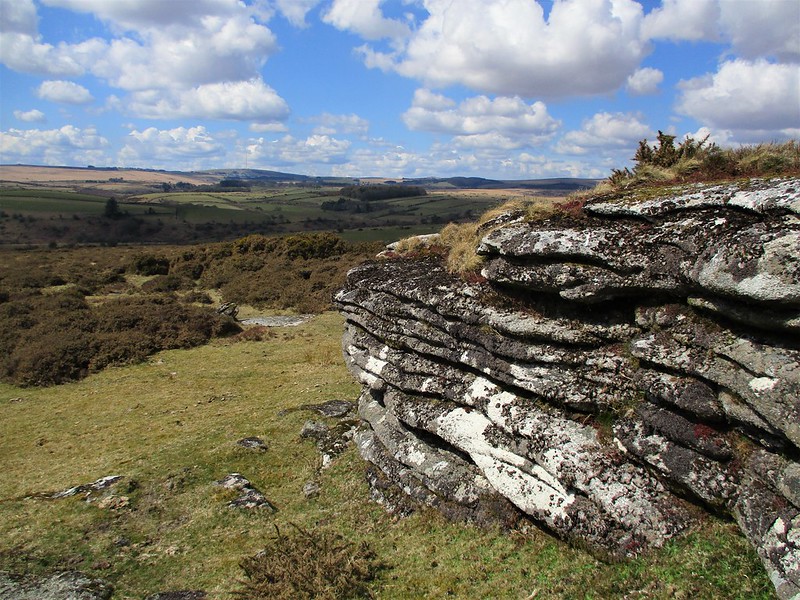TORS OF DARTMOOR
a database of both lesser- & well-known rocks and outcrops
Huccaby TorHuckaby Tor
 This small tor of four low outcrops is set on a spur above and to the north west of Huccaby Cottage on the B3357 between Dunnabridge and Dartmeet. It has to date received rather scant attention in the literature of the moor. Samuel Rowe writing in 1848 and interchanging the name with Huckaby Tor states that it "presents nothing remarkable" and Crossing is equally dismissive in 1909 firstly calling it a "small pile" and then repeating Rowe's earlier criticism almost word for word on page 461 of the Guide to Dartmoor. Eric Hemery (1983) gives us a little more to go on; "East of Cox Lake is Huccaby Tor (approx. 1,150 feet), where Dart's north valley side marks its last rise before the long, undulating decline to Dartmeet. The tor consists of four small piles. The two largest in order of size are the central and north piles... on the summit rock, a basin which can no longer retain water due to the rock's movement since it formed."  Terry Bound (TB) in his A to Z of Dartmoor Tors from 1991 has extra information which adds to the history of the site for not only does he advise on how to reach the tor "from the gate to the west of Huccaby Cottage walking 500 metres north west passing Huccaby Ring on the way" he also recounts that the area around it was once used for horse racing. He writes "In the days when horse racing was as prominent around the moor as it was in the more affluent areas of Britain, many local hunts and landowners set up a course on common lands within their own boundaries. Huccaby Tor was one such venue; the cropped grass was one advantage and the presence of good communication (even in those days) meant that attendance was high. On 10th June 1909, King George V and Queen Mary watched racing here, an event to swell the crowds even more."  The tor itself is comprised of about four outcrops each with character and with close jointings in the granite. The lowermost pile has an abundance of grey lichen and stonecrop growing across its surface. Just as Hemery observed one of the higher rocks in the group has a large but flattened and shallow rock basin. There are some superb views to be had from the lowly rocks, south over Holne Ridge, west towards Princetown and north west to Bellever Tor and beyond to Longaford and Higher White Tors. The panorama is far reaching, and it is difficult to understand how early commentators could not have been impressed by it.  An alternative route to the tor from the one suggested by TB is walking in from the main car park at Dunnabridge and out along the track towards Laughter Hole Farm (signposted). Upon reaching the fenced off mine shafts on the right of the track at approximately SX 652751 you will notice a path leading to the south east this takes you directly to the tor. As you pass through the gate to the north of the rocks note a fine example of a slotted gatepost at SX 6568 7423.
| ||||||||||||||||||||||||||||